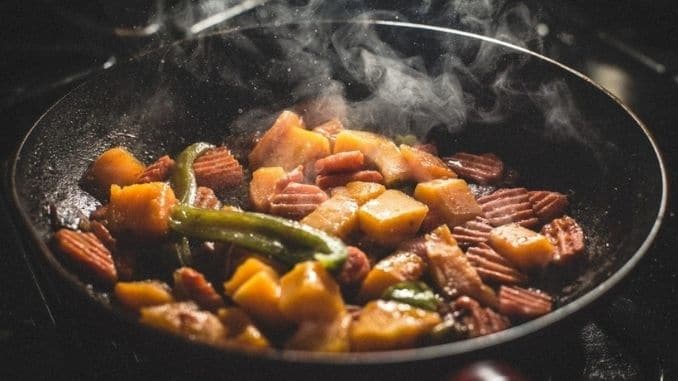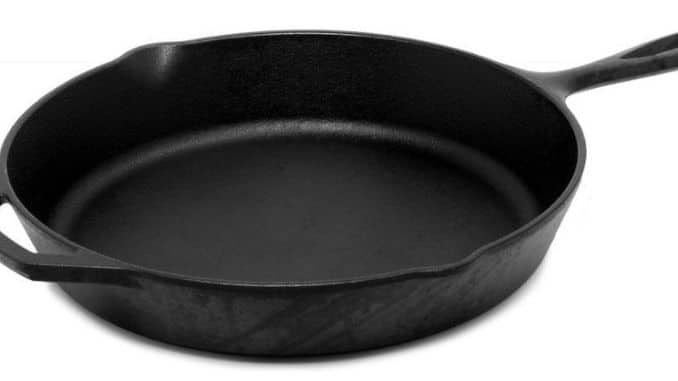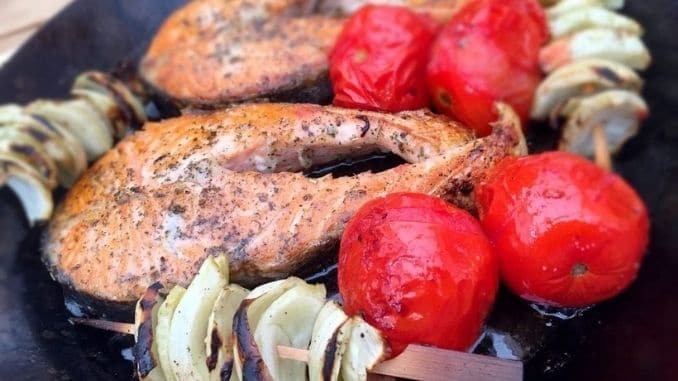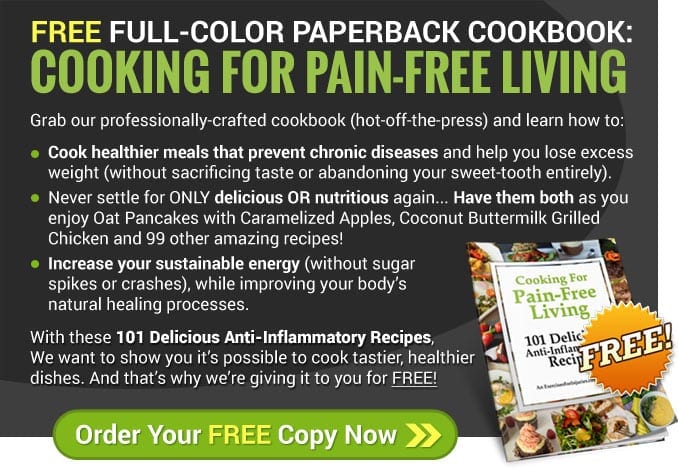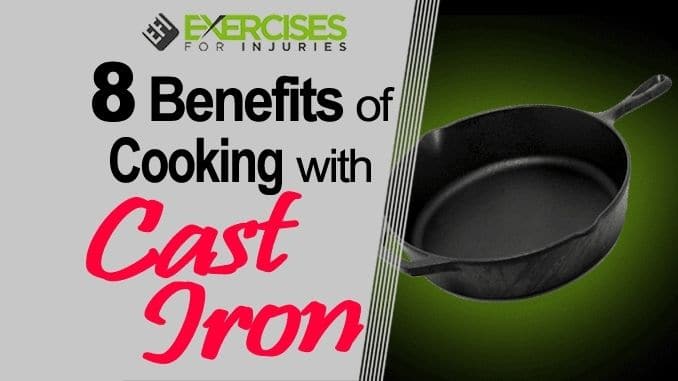
When you go to cook a meal for your family, usually you’re thinking about the food you’re using more than the vessels you’re cooking it in. Recent research, though, suggests that we’d all be smart to become more aware of what makes up our pots and pans.
Back in 2003, the Environmental Working Group (EWG) reported that cookware coated with Teflon and other nonstick coatings could get hot enough during just two to five minutes of regular preheating to degrade that coating to the point that it emitted toxic particles and gases. Although Teflon manufacturer DuPont claimed for years that their products were safe, these and other studies have contradicted those statements.
A potentially dangerous chemical called perfluorooctanoic acid (PFOA) is used in the process of making Teflon and other nonstick products. This chemical has been linked to cancer and birth defects in animals and has been found to be widespread in humans. We are exposed to this chemical in many products. Fortunately, in 2015, DuPont and other companies agreed to eliminate PFOA from their products.
The good news is that you don’t have to risk toxic exposure to enjoy a good home-cooked meal. We have many options that are less likely to emit toxins, including stainless steel, ceramic, glass, porcelain enamel and cast iron. Today, we’re looking at the many benefits of cast-iron cooking — not only because it’s nearly as nonstick as other modern surfaces but also because it provides many benefits in the kitchen.
1. Adds Nutrients
When you cook in cast iron, you get a little iron with your meal naturally. Just how much depends on what you’re cooking and how acidic it is. But, all meals will contain a little bit of the element. In one study, for example, researchers tested several different foods cooked in iron skillets and found that most contained significantly more iron after they were cooked than they did when cooked in other types of cookware. Acidity, moisture content and cooking time all affected how much iron ended up in the final dish.
In 2003, researchers found that using iron pots in developing countries for the preparation of food could help to fight iron deficiency and iron deficiency anemia, which are more common in these countries. In a 2013 study, researchers reported a 16.2 percent increase in iron content for snacks cooked in iron pots as opposed to Teflon-coated pots. They recommended the pots to alleviate iron deficiency in vulnerable populations like pregnant women.
2. Naturally Nonstick
You may not think of cast iron as being nonstick, but you can make it so by seasoning the pans. Many new pans today come already preseasoned, which means that you can start cooking right away. These types of pots are said to be “enameled” with a glaze that helps ensure that foods won’t stick.
Enameled cast iron is more expensive, however, so if you want to save money, you can get a plain cast-iron skillet and season it yourself. Chefs also recommend that you regularly season any cast-iron pot, even enameled ones.
To season a new skillet, start by wiping it out with damp — not wet — cloth or paper towel and dry it, then use a paper towel to coat it with vegetable oil. Make sure it’s completely coated — including the exterior and handle — then place it in the oven at 350 degrees Fahrenheit and let the oil bake into the surface for an hour. Remove the pot and let it cool, then repeat the process another two or three times and any time that you notice food items sticking. To reseason the pan, you can also heat the oiled skillet on the stovetop until it starts to smoke, rub it down with a paper towel and let it cool.
3. Long-lasting
If you have an old cast-iron pot that your grandparents passed down to you, there’s a reason for that. These types of pots and pans are very long-lasting. You may have heard stories of your grandpa taking the pot camping or your grandmother using it to cook many tasty meals for the family.
Cast-iron cookware indeed lasts and lasts, making it not only economical but also eco-friendly, as it is less likely to be tossed into the trash after a few years. They’re extremely durable and, as long as you take care of them, they will probably be around for you to pass on to your grandchildren too. “Even better, cast iron improves with age. With each use, the cooking surface smoothes out. And, the oil sinks deeper into the surface to improve the seasoning even more.
4. Inexpensive and Versatile
When buying cookware, you can spend a little or a lot, but cast iron is consistently economical. One piece averages about $25 and, considering how long it usually lasts, that’s a real bargain. You can even find good ones in second-hand stores.
On top of that, one cast-iron pan can take the place of many other pieces of cookware, including a searing pan, soup pot, griddle, bread pan, and more. Indeed, you can cook almost anything in a cast-iron pan. It works on a stovetop or in the oven as well as over a campfire or outdoor grill. You can sear, fry, stew, roast, simmer and bake in the same pan. A cast-iron skillet can make steaks, cornbread, pizza, pasta, hash browns, eggs, and fried or sauteed chicken. Few, if any, other pans can do that!
5. Absorbs and Stores Heat
The main reason many cooks like cast iron is because it has a unique ability to grab heat and hold onto it. Although some say that cast iron “distributes heat evenly,” it doesn’t do that. Instead, it has what is called a high “thermal mass,” meaning that once you get it hot, it’s going to stay hot, and won’t drop in temperature like other, thinner types of cookware.
That means you can add more food to the pot as you go, and the temperature will hold, resulting in less time overall to cook your entire meal. Because the pan holds onto its heat, food also cooks evenly. If you imagine cooking with a stainless-steel pan, you can hold your hand over it and not feel much heat. A cast-iron pan, on the other hand, sends heat upward into the food, which is why it often works better for roasting.
To get the optimal results out of cast iron, always preheat it first, and then you’re good to go.
6. Easy to Clean
As long as your cast iron is well-seasoned, it will remain easy to clean. Your best approach is to empty the pan after cooking, run it under water while it’s still warm, scrape off any food bits, use some mild dish soap, if needed (it is a myth that you can’t use soap on cast iron) and wipe dry completely.
Making sure that you dry the pan thoroughly is essential. Water can create rust on a cast -iron pan, so always be sure to dry it and never leave it standing with water in it, meaning don’t “drip-dry” or “air-dry” the pan. After you’ve hand-dried it, take an extra step. Place it overheat again to evaporate any remaining moisture. A hot stove for a couple of minutes is sufficient. Once it’s completely dry, wipe down with a paper towel soaked in oil and heat it again until it lightly smokes. Let it cool completely, wipe off any remaining oil and store it away.
7. Keeps Food Warm
Remember that we mentioned that once a cast iron pot heats up, it stays hot? That can be very beneficial for keeping food warm. If you want to make sure food is ready for second helpings or if you want to save it for someone who is joining you, later on, you can leave it in the pan at a low temperature and rest assured that your meal will be nice and warm when that person arrives. You can even place your pan on a hot mitt on the table and trust that it will keep the food warm all through the meal —be sure to keep little fingers away!
8. Emergency Ready
Power outages are always a possibility and, should your power go out, how will you cook for your family? A cast-iron skillet can be used over any heating source, even a campfire or charcoal grill. If there is a natural disaster in your area or a severe power outage, as long as you have some sort of heat available, you can use cast iron to cook a wide variety of foods.
Potential Negatives of Cast-iron Cooking
There are a few things to be aware of when using cast-iron cookware. First of all, remember that it stays hot, so always handle it carefully. Most skillets are made all in one process, including the handle, which means that the handle can get very hot too. Always protect your hands or use a silicone handle cover made for cast-iron cookware. These slip over the handle and offer a protected grip.
Next, understand that cast iron is heavy. Your skillet will feel heavier than those made with other materials. This weight adds to the cookware’s durability and can also add to your muscle development. Just remember when you go to lift it or move it that it is substantial and always keep your wrists straight.
Cast iron rusts when exposed to water, so always make sure your cookware is completely dry before putting it away. Finally, beware of cooking some acidic foods like tomato sauce in your skillet. The acid in the food can pull more iron and other metallic flavors than you’d like into your dish. As long as your pan is well seasoned, you should be fine, but it’s still best to avoid simmering acidic food like citrus-based sauces and tomato sauce, in particular.
For your guide to cooking healthier and achieving a pain-free body, check out Cooking For Pain-Free Living, here!
.

